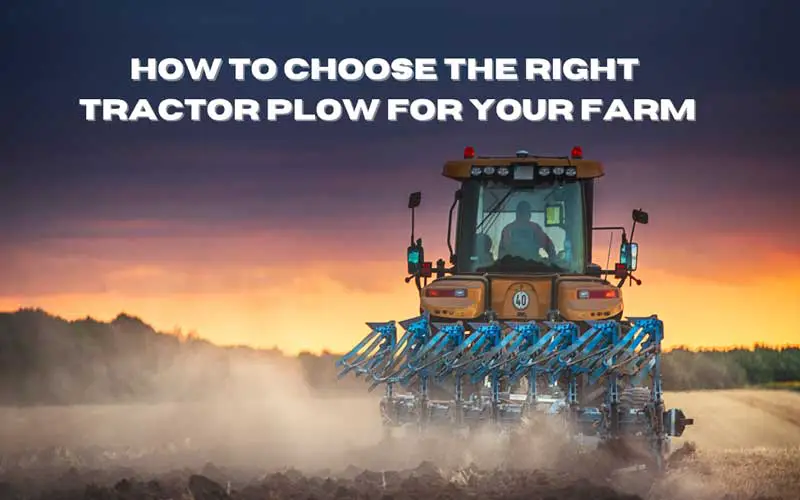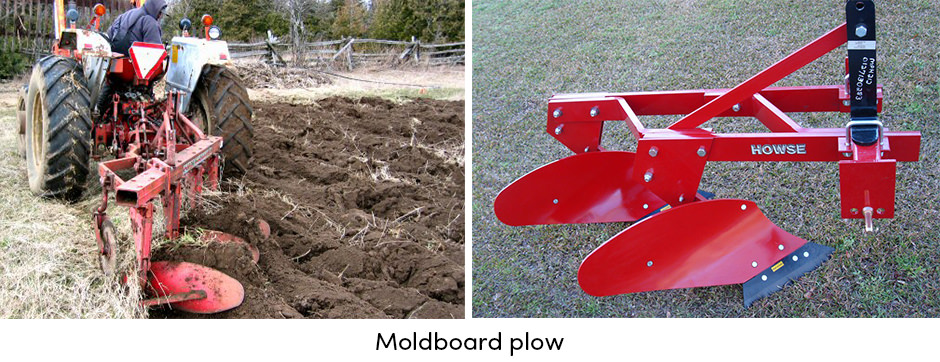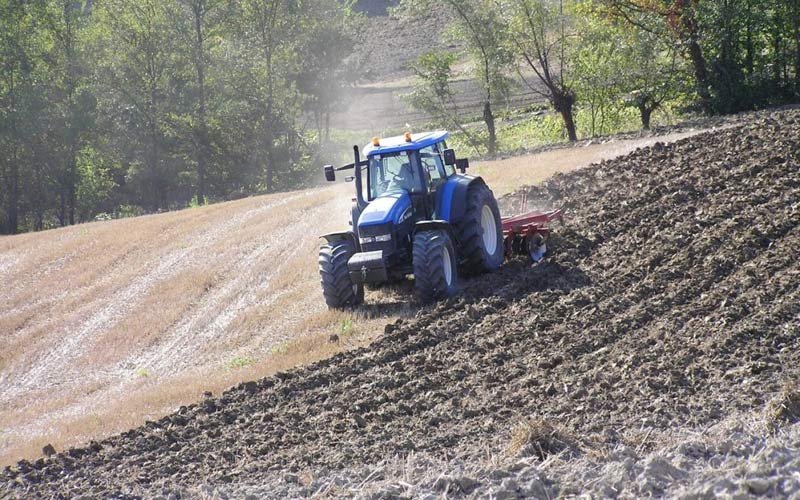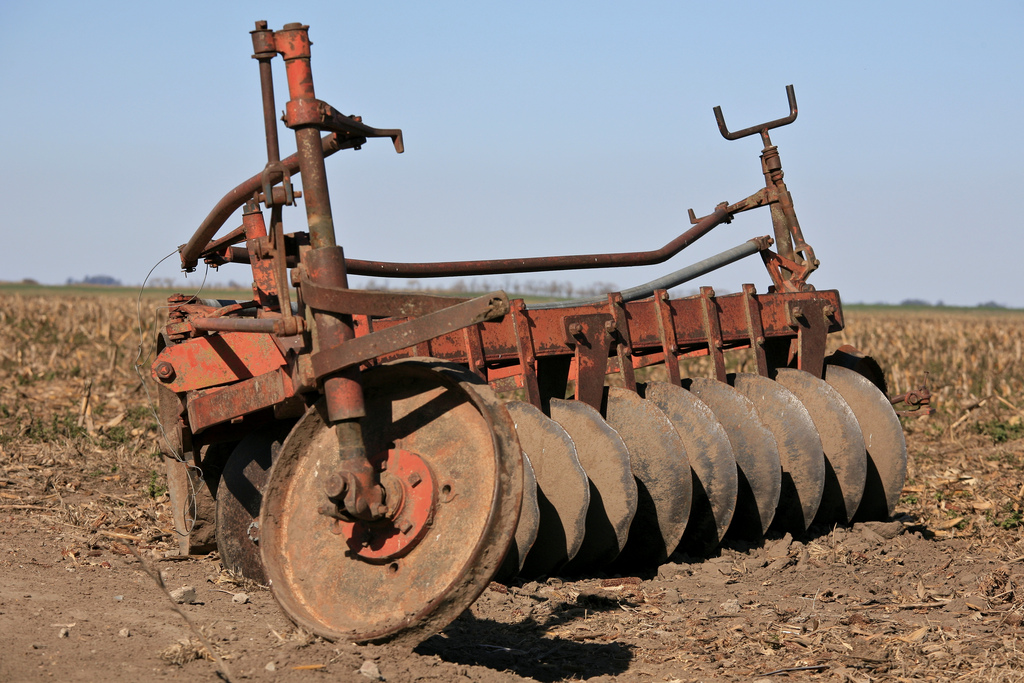This post may contain affiliate links which means I may receive a commission for purchases made through links. Learn more on my Private Policy page.
If you’ve ever wondered which plow is the best match for your soil, look no further. Choosing the right plow can make all the difference in optimizing your farming practices. With a variety of soil types out there, understanding which plow is most suitable for your specific needs is essential. So, let’s explore some key factors to consider when selecting the ideal plow for your soil type.
Factors to Consider
When it comes to choosing the right type of plow for your soil type, there are several factors that you need to take into consideration. Each factor plays a significant role in determining the suitability of a particular plow for your specific needs. By carefully evaluating these factors, you can make an informed decision and ensure that you choose the right plow for your soil type.

This image is property of oldtractorpictures.com.
Soil Composition
The first factor to consider is the soil composition. Different types of soil have different characteristics, which can impact the effectiveness of different plow types. Understanding your soil composition is essential in determining the right plow for your soil type.
Sandy Soil
Sandy soil is characterized by its coarse texture and low water-holding capacity. It drains quickly and is easy to work with, making it suitable for plowing with various plow types. However, it is crucial to choose a plow that can effectively loosen and turn the soil to maximize its fertility.
Clay Soil
Clay soil is composed of fine particles and has a high water-holding capacity. It tends to become compacted easily, making it more challenging to plow. For clay soil, a plow that can break up the compacted soil and improve its drainage is essential.
Loamy Soil
Loamy soil is considered the ideal soil type for agriculture. It is a balanced combination of sandy, clay, and silt particles, providing excellent drainage while still retaining enough moisture. Most plow types are suitable for loamy soil, as it is relatively easy to work with.
Silty Soil
Silty soil is composed of fine particles that are smaller than sand but larger than clay. It has excellent water-holding capacity but can become easily compacted. A plow that can effectively break up the compacted soil and enhance drainage is recommended for silty soil.
Peaty Soil
Peaty soil is characterized by its high organic matter content and dark color. It is usually found in wet or marshy areas and has excellent water retention properties. When plowing peaty soil, it is important to choose a plow that can work effectively in wet conditions and prevent excessive soil disruption.
Chalky Soil
Chalky soil is alkaline in nature and contains a high percentage of calcium carbonate. It is typically shallow and rapidly draining, which can pose challenges when plowing. A plow that can effectively penetrate chalky soil while minimizing soil disruption is necessary.
Soil Moisture
The second factor to consider is the soil moisture content. The moisture level of your soil plays a crucial role in determining the effectiveness of different plow types. Understanding your soil’s moisture characteristics will help you select a plow that can handle the specific moisture conditions effectively.
Well-Drained Soil
Well-drained soil has excellent drainage capabilities and allows water to move freely through the soil profile. Most plows are suitable for well-drained soil, as it is easier to work with and does not require specialized plowing equipment.
Poorly-Drained Soil
Poorly-drained soil retains water for an extended period and has limited drainage capabilities. When plowing poorly-drained soil, it is crucial to choose a plow that can effectively break up the compacted soil and improve its drainage.
Waterlogged Soil
Waterlogged soil is saturated with water and lacks proper drainage. It is challenging to plow waterlogged soil, as it can lead to excessive soil compaction and poor soil structure. In such cases, it is recommended to choose a plow that can work in wet conditions without causing excessive soil disruption.
Dry Soil
Dry soil lacks moisture and may be challenging to work with if it is too compacted. Using a plow that can effectively break up the soil and loosen it to promote moisture penetration is crucial when dealing with dry soil.
Soil Texture
The third factor to consider is the soil texture, which refers to the relative proportions of sand, silt, and clay particles in the soil. The texture of your soil plays a significant role in determining how easily it can be worked and the type of plow that is most suitable.
Coarse Soil
Coarse soil, such as sandy soil, is composed of larger particles that do not stick together well. It is relatively easy to plow, and most plows can effectively work with this type of soil texture.
Medium Soil
Medium soil, also known as loamy soil, is a balanced combination of sand, silt, and clay particles. It has good water retention properties and is relatively easy to work with. Most plows are suitable for medium-textured soil.
Fine Soil
Fine soil, such as clay soil, is composed of small particles that tend to stick together. It can become compacted easily and may require specialized plows that can effectively break up the soil and improve its structure.
Soil Depth
The fourth factor to consider is the soil depth, which refers to the thickness of the soil layer in which plants can grow their roots. The soil depth will determine the type of plow that can effectively penetrate and work the soil.
Shallow Soil
Shallow soil has a limited depth, often less than a foot. It may contain rocks or hard layers that make plowing challenging. For shallow soil, it is essential to choose a plow that can work effectively in shallow depths without causing damage to the soil structure.
Moderately Deep Soil
Moderately deep soil has a moderate thickness, typically ranging from one to three feet. Most plows can effectively work with moderately deep soil without any issues.
Deep Soil
Deep soil has a significant depth, allowing plants to establish deep root systems. Most plows can effectively work with deep soil, as the depth provides ample space for the plow to penetrate and turn the soil.

This image is property of www.agrivi.com.
Weed Control
The fifth factor to consider is the weed infestation level in your field. The amount of weeds present will influence the type of plow that is most suitable for effective weed control.
High Weed Infestation
If your field has a high weed infestation, it is important to choose a plow that can effectively uproot and bury the weeds to minimize re-growth. Specialized plows with weed control features, such as moldboard plows with inboard skimmers, can be beneficial in tackling high weed infestations.
Moderate Weed Infestation
For fields with a moderate weed infestation, most plows can effectively control weed growth when used properly. It is important to choose a plow that has good soil penetration capabilities to ensure that weed roots are effectively buried.
Low Weed Infestation
Fields with a low weed infestation are easier to manage, and most plows will effectively control weed growth. The choice of plow can be based on other factors, such as soil composition and texture.
Field Size
The sixth factor to consider is the size of your field. The field size will determine the type and size of plow that is most suitable for efficient and effective plowing.
Small Field
For small fields, a smaller plow or a handheld tiller may be more suitable. These types of plows are easier to maneuver and can effectively work in tight spaces.
Medium Field
Medium-sized fields can be efficiently plowed using medium-sized plows that are commonly available. These plows provide the right balance between size and plowing capacity.
Large Field
Large fields require larger plows that can cover more ground in less time. Choosing a plow with a wider working width and higher horsepower requirements can significantly improve efficiency when plowing large fields.

This image is property of nelsontractorco.com.
Budget
The seventh factor to consider is your budget. Your budget will influence the type of plow that you can afford and the features it may have.
Limited Budget
If you have a limited budget, it is important to prioritize essential features and choose a plow that provides the best value for your money. It may be necessary to compromise on certain features but ensure that the plow meets your basic requirements.
Moderate Budget
With a moderate budget, you have more flexibility in choosing a plow that meets your specific needs. You can consider plows with additional features or higher quality materials that enhance durability and performance.
High Budget
A high budget allows you to choose from a wide range of high-quality plows with advanced features. You can invest in specialized plows that offer superior performance and durability, which can be beneficial in challenging soil conditions.
Plow Type
The eighth factor to consider is the type of plow. There are several types of plows available, each designed for specific soil and farming requirements. Choosing the right plow type is crucial in ensuring effective plowing.
Moldboard Plow
The moldboard plow is one of the most common types of plows. It effectively turns and buries the soil, making it suitable for various soil types. It is especially useful for breaking up compacted soil and improving soil structure.
Chisel Plow
The chisel plow is designed to loosen soil without fully turning it. It is ideal for fields with moderate to high weed infestations, as it minimizes soil disruption and buries weed roots effectively.
Disk Plow
The disk plow uses a set of concave disks to cut and turn the soil. It is suitable for fields with thick vegetation and heavy soil, as it effectively cuts through plant residue and improves soil structure.
Subsoiler Plow
The subsoiler plow is primarily used for deep tillage, targeting compacted soil layers beneath the surface. It is helpful in breaking up hardpan or clay layers and improving soil drainage.
Moldboard Plow with Inboard Skimmers
The moldboard plow with inboard skimmers is a specialized plow that combines the features of a moldboard plow and skimmer blades. It effectively controls weeds while turning and burying the soil.

This image is property of farmingequipmentcanada.com.
Equipment Compatibility
The ninth factor to consider is the compatibility of the plow with your existing equipment. It is important to ensure that the plow you choose can be effectively attached and operated by your tractor or other farm machinery.
Experience
The final factor to consider is your level of experience in operating different types of plows. Some plow types require more skill and experience to operate effectively, while others are more straightforward. It is essential to choose a plow that matches your level of experience to ensure safe and efficient plowing.
In conclusion, choosing the right type of plow for your soil type involves considering various factors such as soil composition, moisture, texture, depth, weed control needs, field size, budget, plow type, equipment compatibility, and your experience level. By carefully evaluating these factors and understanding their impact on plowing, you can make an informed decision and ensure that you choose the most suitable plow for your specific needs. Remember to prioritize the factors that are most relevant to your particular situation and seek advice from experts or agricultural professionals if needed. Happy plowing!

This image is property of www.agrivi.com.
This post may contain affiliate links which means I may receive a commission for purchases made through links. Learn more on my Private Policy page.

